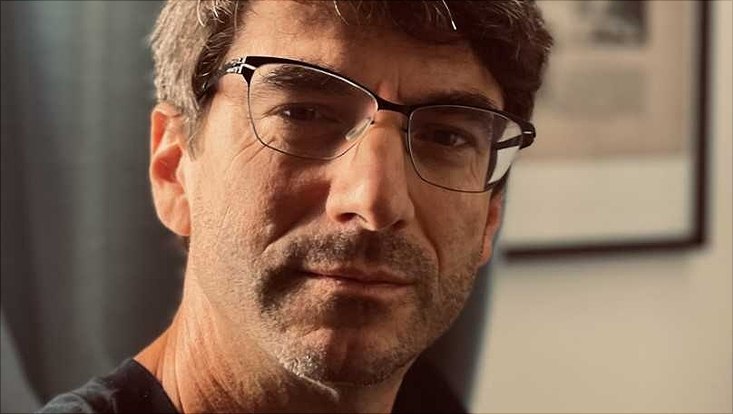Prof. Dr. Wolf-Dietrich Löhr

Curriculum
Wolf-Dietrich Löhr is an art historian interested in the transitions between text and image, in biographies and anecdotes of artists, and in the interrelations between materials, techniques and the body. His dissertation examined the connections between poetics and portraits of poets in the Middle Ages (Lesezeichen. Francesco Petrarca und das Bild des Dichters bis zum Beginn der Frühen Neuzeit). Other publications were dedicated to the relationship between art theory, literature and theology, the art of drawing, and the hand as a tool and metaphor. From 2004 to 2010, he taught at the Freie Universität Berlin and from 2010 to 2021 as a joint junior professor at the Freie Universität and the Deutsches Kunsthistorisches Institut in Florence (MPI). In 2016 he received the Jacob Burckhardt-prize. From 2021 to 2024 he was part of the DFG research group Dimensionen der techne in den Künsten, working for the project Handling and Instructions in the ‘Art Literature’ of the Early Modern Period (Prof. Dr. Christina Lechtermann, Ruhr University Bochum).
His current projects concern the contemplation of art in the early Middle Ages; body, hand and tools in biographies of artists; panel painting in the context of crafts and techniques; issues of canonicity.
Publications (selection)
- Dürers deadline: Zeit am Werk, in: Dialoge. Magdalena Bushart zum 65. Geburtstag, Juni 2023. https://doi.org/10.58079/nlui.
- »eine große Kraft in unseren Herzen« – imitatio und superatio als Vektoren des Wettstreits, in: Idole und Rivalen. Künstler im Wettstreit, Ausstellungskatalog Kunsthistorisches Museum Wien, ed. by Gudrun Swoboda, Berlin 2022, pp. 113–127.
- Das verlorene Profil der Renaissance. Paul Delaroche’s Hémicycle und die Schwierigkeit, sich ein Bild von einer Epoche zu machen, in: M. Chatzidakis/ H. Haug/ L. Roemer/ U. Rombach (eds.): Con bella maniera, Festgabe für Peter Seiler, Heidelberg: arthistoricum.net 2021, pp. 425–450. https://www.doi.org/10.11588/arthistoricum.855.c11082.
- »Quanta vis«: Fragmente einer Kunsttheorie in Petrarcas De Remediis?, in: Petrarca und die bildenden Künste. Dialoge – Spiegelungen – Transformationen, ed. by Sebastian Schütze and Maria Antonietta Terzoli, Berlin/Boston 2021, pp. 59–92.
- »Vielleicht ...«. Sinnentzug und Faktur in Giambattista Piazzettas Kölner Pastorale (1740/45), in: Erosionen der Rhetorik? Ambiguitätsstrategien in den Künsten der Frühen Neuzeit (culturae, 4), ed. by Valeska von Rosen, Wiesbaden 2012, S. 321–356.
Research project: Focus and Distance - Suspense in Italian Panel Painting of the 14th Century
In Italian panel painting of the 14th century a series of new tasks and formats can be observed, which were accompanied by an increased attention to the effects of the paintings. Sources of various kinds - poems, commentaries, chronicles, novellas - provide subtle descriptions of perceptual-psychological phenomena: Figures seem to break out of their frames (“effigies erumpentes”: Francesco Petrarca, c. 1360), keep viewers in uncertain suspense about their status (“suspendunt”: ibid.) or can disturbingly „get stuck in the brain” (“traversare nel capo”: Franco Sacchetti, c. 1400). The erudite public in particular senses and enjoys the appeal of this inherently dangerous “power” of painting (“vis”: Petrarch).
The project takes these concepts as a starting point to analyze small-scale panels for such effects and strategies. They respond to memorized images and iconographic traditions, which they re-address in a field of remembrance, expectation, suggestion and imagination. Focus and distance prove to be converging dynamics in this process: The paintings demarcate themselves from the audience through framing devices, which they simultaneously transgress and pierce again and again by offering accessibility through sculptural effects, kinetic impulses and perspective adjustments. Energies of emotions and movements are built up on the smallest picture surfaces through gaps and ellipses, actions are intensified through compression and rhythms, spaces are layered and twisted, meanings are accentuated through internal framing, contrasts, and leaps in scale.
The project would also like to work out the references of the panels to techniques such as carving and goldsmithing as well as weaving and embroidery, with which they were associated in their original functional contexts, in order to scrutinize the Western canon of the three Fine (and often too isolated) Arts of painting, sculpture and architecture.
